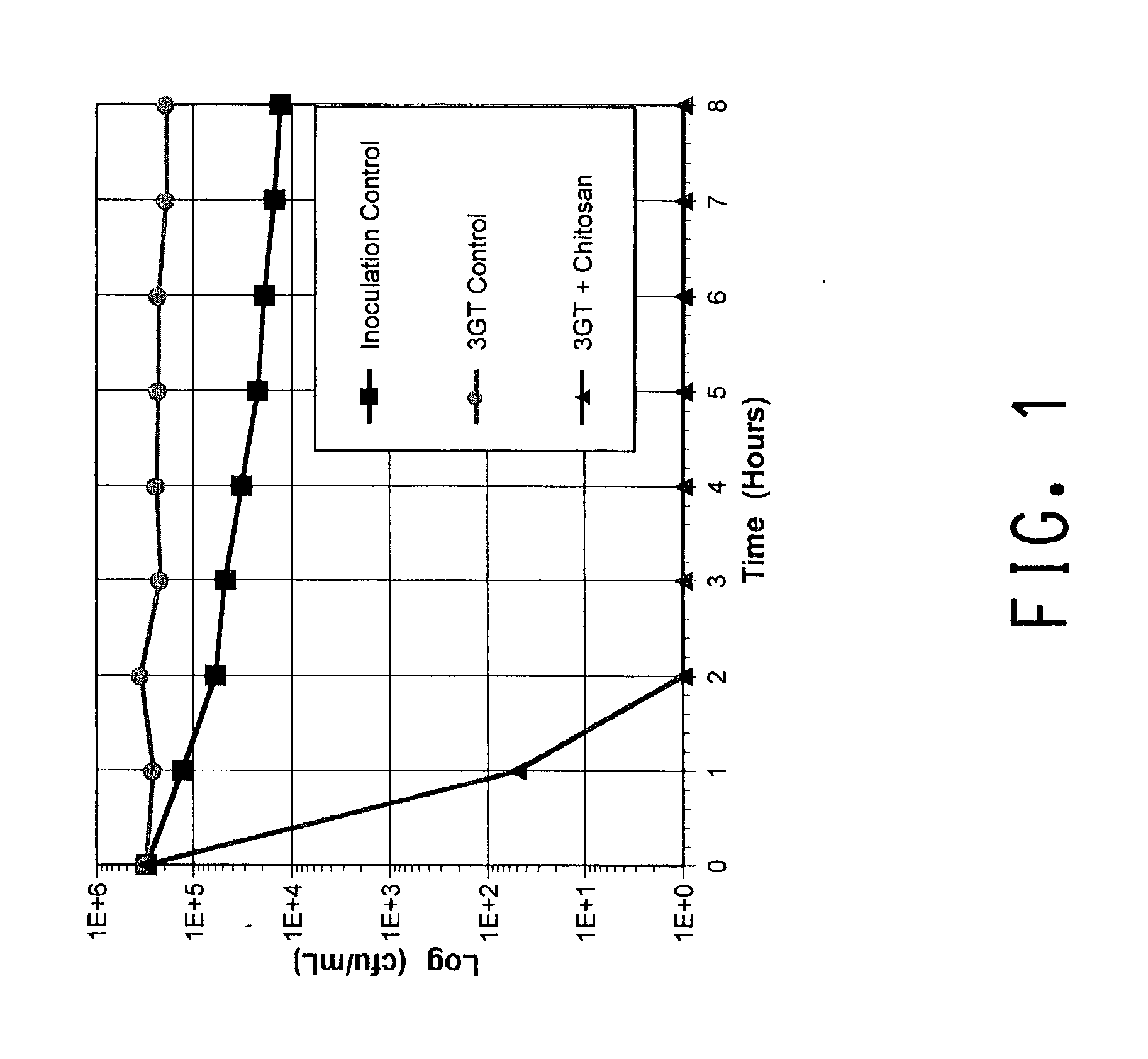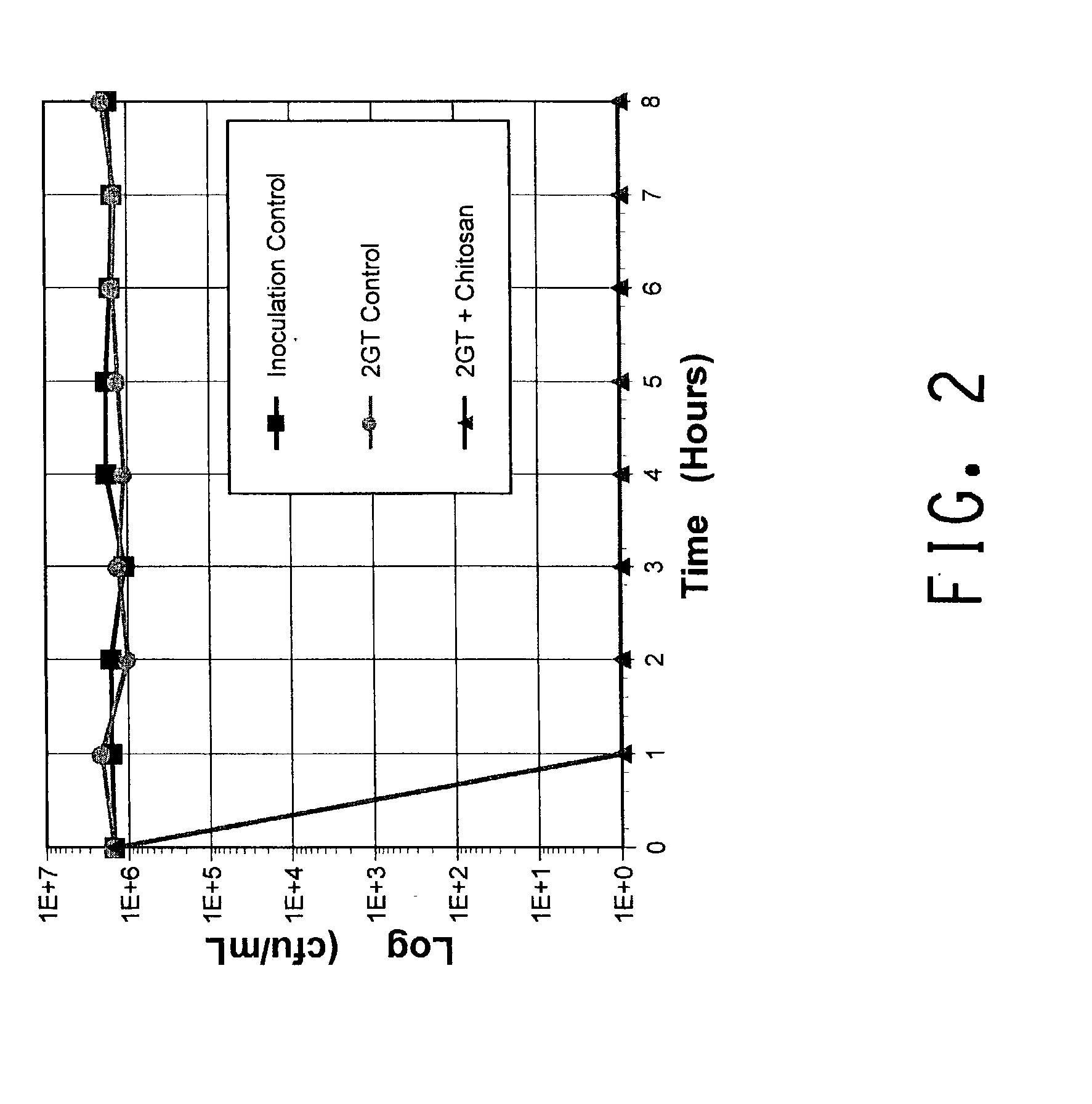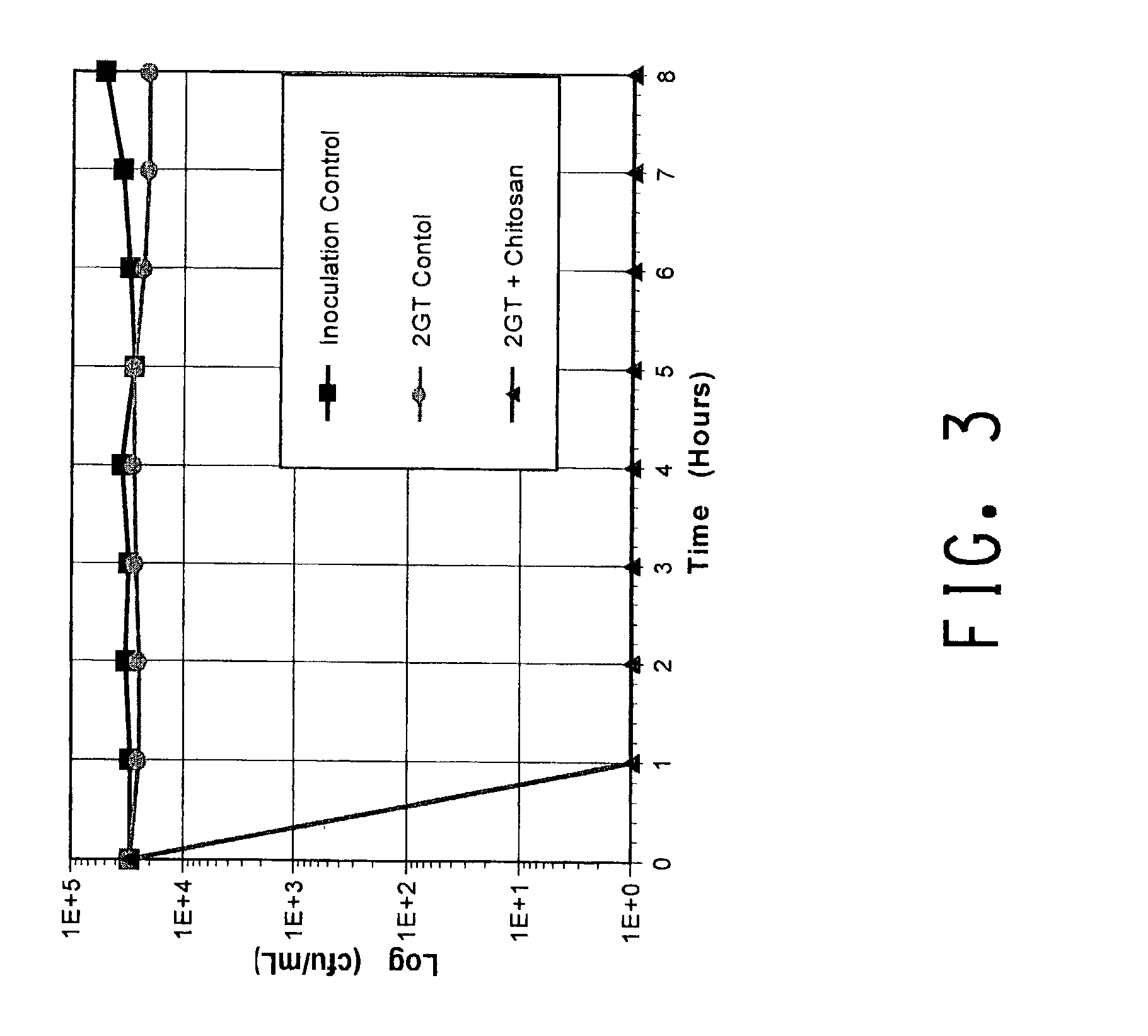Antimicrobial polyester-containing articles and process for their preparation
- Summary
- Abstract
- Description
- Claims
- Application Information
AI Technical Summary
Problems solved by technology
Method used
Image
Examples
example 1
Preparation of Chitosan Grafted 2GT and 3GT Knit Standard Polyester Fabrics
[0102] Polyester fabrics (8 inch.times.9 inch; 3GT fabric weighing 21.8 g, 2GT fabric weighing 19.5 g) were soaked in 10% aqueous sodium hydroxide solution and gently shaken for 90 min. Each was then washed with water and soaked in 1 M aqueous hydrochloric acid solution for 30 min, washed with deionized water and dried in air for 1 h. Each was then immersed in 2 weight % aqueous chitosan solution (mol. wt. 75,000,) containing 1.5% acetic acid for 30 min, The chitosan used in Example 1 was food grade Chitoclear.RTM. chitosan (Primex Ingredients ASA, Norway). The degree of N-deacetylation of this sample was over 90% and this was ascertained by proton and carbon 13 NMR spectroscopy. The molecular weight of this sample was estimated using standard relative viscosity measurements as reported in the literature. The excess chitosan was allowed to drip, air dried for an hour and then dried at 85.degree. C. for 16 h u...
example 2
Grafting of Chitosan Samples of Varying Molecular Weight onto 2GT Fabrics and the Evaluation of the Resulting Antimicrobial Properties
[0121] Chitosan samples with degree of de-N-acetylation of over 80% and mol. wt. in the range of 950,000 (Pfansteihl, U.S.A.), 630,000 (Sigma Chemical Company, U.S.A.), 290,000 (Kitomer, Canada), 104,000 (Chitoclear.RTM., industrial grade, Primex Ingredients ASA, Norway), 83,000 (Chitoclear.RTM., industrial grade, Primex Ingredients ASA, Norway), 74,000 (Chitoclear.RTM., food grade, Primex Ingredients ASA, Norway), 39,000 (Chitoclear.RTM., food grade, Primex Ingredients ASA, Norway), and 33,000 (Chitoclear.RTM., food grade, Primex Ingredients ASA, Norway) were grafted onto polyester fabrics in order to evaluate the effect of chitosan molecular weight on the antimicrobial activity. A 1% solution of each commercial chitosan in 0.75% aqueous acetic acid was used in the grafting procedure as described in Example 1. As shown in FIG. 5 (2GT; E. coli ATCC 25...
example 3
Preparation of Chitosan Grafted Fabrics Treated With Antimicrobial Salts
[0122] Chitosan grafted 3GT woven fabric (22.8 g), prepared according to the procedure of Example 1 was soaked in 2% aqueous silver nitrate solution for 30 min, extensively washed with water, and dried at 37.degree. C. for 16 h. Weight of the resultant fabric was 23.0 g.
[0123] Similarly, chitosan grafted 3GT knit fabric (23.1 g), prepared according to the procedure of Example 1 was treated with 2% copper sulfate solution as described above to obtained copper doped fabric, (23.7 g).
[0124] As indicated by the results obtained, metal doping of chitosan-grafted polyester may be used to enhance antimicrobial activity. Silver nitrate (FIG. 7), copper sulfate (FIG. 8) or, by a similar procedure, zinc sulfate were used successfully as metal dopes. FIG. 7 demonstrates 3GT fabrics prepared with grafted chitosan with or without a silver nitrate dope vs. Salmonella cholerasuis ATCC 9239. FIG. 8 demonstrates 3GT fabrics prep...
PUM
| Property | Measurement | Unit |
|---|---|---|
| temperature | aaaaa | aaaaa |
| pKa | aaaaa | aaaaa |
| temperature | aaaaa | aaaaa |
Abstract
Description
Claims
Application Information
 Login to View More
Login to View More - R&D Engineer
- R&D Manager
- IP Professional
- Industry Leading Data Capabilities
- Powerful AI technology
- Patent DNA Extraction
Browse by: Latest US Patents, China's latest patents, Technical Efficacy Thesaurus, Application Domain, Technology Topic, Popular Technical Reports.
© 2024 PatSnap. All rights reserved.Legal|Privacy policy|Modern Slavery Act Transparency Statement|Sitemap|About US| Contact US: help@patsnap.com










